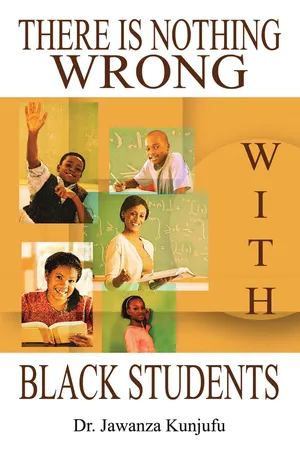
- 129 pages
- English
- PDF
- Available on iOS & Android
There Is Nothing Wrong with Black Students
About this book
Refuting common ideas about the racial achievement gap, this exploration of the education system posits that the gap is not the result of the students, their parents, or the larger community, but rather stems from the limited effectiveness of the schools they attend. With a focus on what principals and teachers can do, this instructive resource explores ways that schools can change in order to better serve the needs of these students, such as gaining a better understanding of different learning styles, implementing a curriculum that is more relevant to students' lives, focusing on the amount of time each task takes each student, and experimenting with single-gender classrooms. This book also looks at examples of the success of black students in schools that have taken the time to apply some of these policies, demonstrating that any student can thrive when benefited with a passionate and comprehensive education.
Frequently asked questions
- Essential is ideal for learners and professionals who enjoy exploring a wide range of subjects. Access the Essential Library with 800,000+ trusted titles and best-sellers across business, personal growth, and the humanities. Includes unlimited reading time and Standard Read Aloud voice.
- Complete: Perfect for advanced learners and researchers needing full, unrestricted access. Unlock 1.4M+ books across hundreds of subjects, including academic and specialized titles. The Complete Plan also includes advanced features like Premium Read Aloud and Research Assistant.
Please note we cannot support devices running on iOS 13 and Android 7 or earlier. Learn more about using the app.
Information
Table of contents
- Cover
- Copyright
- Dedication
- Contents
- Introduction
- 1. Examples of Successful Black Youth
- 2. Framework
- 3. Successful Parents
- 4. Successful Educators
- 5. Time on Task
- 6. Successful Public Schools
- 7. Successful African-Centered Schools
- 8. Successful Single Gender Schools
- 9. Conclusion
- References